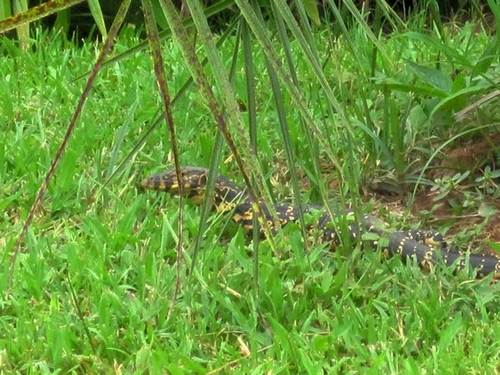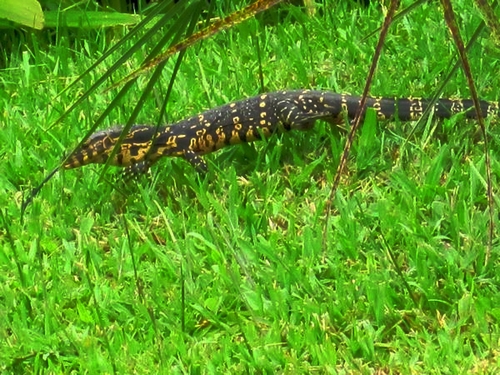The Palm Garden of XTBG represents a typical image of tropical landscape. Occupying an area of 9.3 ha, the Palm Garden is home to 460 palm species from tropical regions. It is one of the richest palm collections in the world. In addition to palms, the wetlands and swamps also provide habitats to some animals.
Two water monitors (Varanus salvator) are frequently found making their ways through the swamps of the Palm Garden this month. The large greyish lizards are brightly colored with bright yellow markings on the body and yellow bands on the tail.


Water monitor (Varanus salvator) is a large species of the monitor lizard. Their body is muscular with a long, powerful, laterally compressed tail. Water monitors are one of the most common monitor lizards found throughout Asia, and range from Sri Lanka, India, Indochina, the Malay Peninsula and various islands of Indonesia, living in areas close to water.
Water Monitors are carnivores, and have a wide range of foods. They are known to eat fish, frogs, rodents, birds, crabs, and snakes They have also been known to eat turtles, as well as young crocodiles and crocodile eggs.


